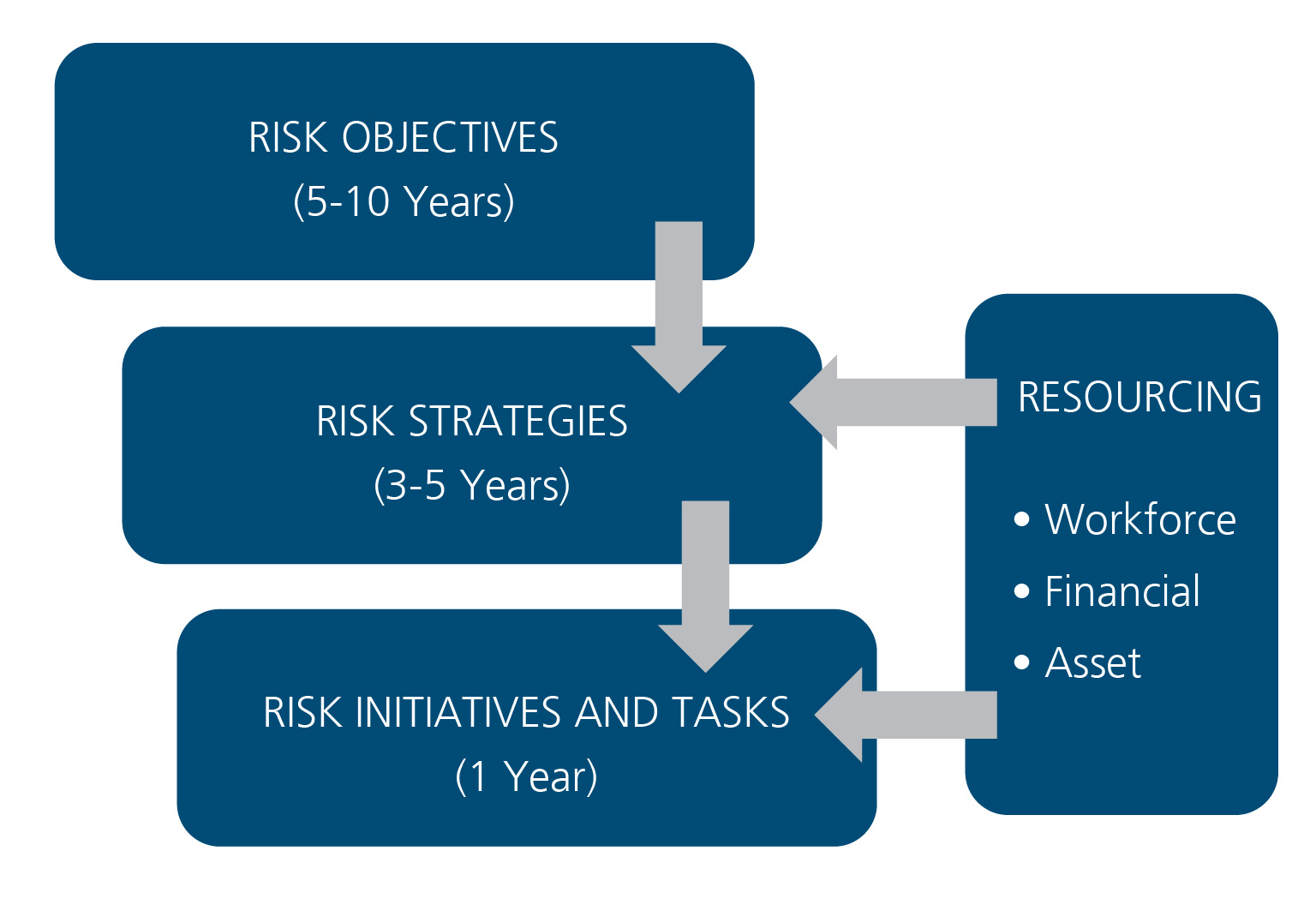RM3 - Risk Management Strategy
| Issue Date | Effective Date | Version |
|---|---|---|
| 19/09/2017 | 01/01/2018 | 1.0 |
Purpose
To determine the overall directions and intentions of an organisation related to its management of risk at an aquatic facility.
Description
The owner or operator of an aquatic facility should include a risk management strategy relevant to the aquatic facility as part of its framework.
A risk management strategy should clearly state and address the following:
- The organisations objectives and strategies
- The organisations objectives and strategies for risk at the aquatic facility and how they are aligned to the overall organisational objectives
- The performance indicators and the extent to which they will be measured
- The plan for developing the capabilities of those who are responsible for managing the risk management framework or parts thereof
- The plan for progressive enhancement of organisational risk management practices, resources and initiatives
Resourcing Plans
The Risk Management Strategy provides a vehicle for each organisation to express its long-term aspirations. However, these aspirations will not be achieved without sufficient resources – time, money, assets and people – to implement them.
The owner or operator of an aquatic facility should develop resourcing plans consisting of the following three inter-related elements:
- Finances (Budgets and Forecasts)
- Assets or Physical Resources (Facilities, Plant and Equipment)
- Workforce (Staff, Contractors and Volunteers)
The resourcing plans should make it clear what elements the owner and operator of the aquatic facility will take responsibility for. Along with other levels of government, business, non-government organisations, community groups and individuals which have a role in achieving the outcomes of the Risk Strategies and/or organisational objectives.
Workforce Planning
Risk management is effective only when all staff, contractors and volunteers are accountable and responsible for the management of risk. Staff, contractors and volunteers should have the confidence to take ownership of, and escalate, risks throughout the owner or operator of the aquatic facility.
Workforce planning identifies accountabilities, responsibilities and capabilities that are critical to the aquatic facilities operations and outlines the training and performance needs for the individuals involved.
Workforce planning also includes specific actions required to improve the capability of individuals (professional development) and projected resource requirements and timeframes.
Financial Planning
The owner or operator of an aquatic facility should maintain financial plans that project financial forecasts for the aquatic facility for at least 4 and ideally ten years in advance, and should be updated annually as part of the development of the Operational Plan or Business Plan (Budget).
The Financial Plan should be used by the owner or operator of the aquatic facility to inform its decision-making during the finalisation of the Risk Strategy and the development of the risk management program in line with the Risk Register and Risk Treatment Plans.
The Financial Plan should be structured to include:
- Projected income and expenditure, a balance sheet and cash flow statement
- Planning assumptions that were used in the Plan’s development
- Any assumptions most likely to impact on the Plan
- Financial modelling for different scenarios, for example the planned scenario, an optimistic scenario (e.g. taking into account a yet-to-be-approved special rate variation) and a conservative scenario
- Methods of monitoring financial performance
Asset Management Planning
An asset management plan identifies assets that are critical to the aquatic facilities operations and outlines risk management strategies for these assets.
The asset management plan must also include specific actions required to improve the aquatic facilities asset management capability and projected resource requirements and timeframes.
Further information on this can be found in the Guidelines for Safe Pool Operations – Asset Management
Documenting the Risk Strategy
The risk management strategy should be covered by document control and records management procedures including at a minimum
- A record of the extent of distribution of the risk management strategy or part thereof
- The date of issue and effective of date
- A document amendment register/log
- The validity period of the risk management strategy and when it was last reviewed
Monitoring and Review
The risk management strategy should be reviewed at least once every 12 months.
References
- AS/NZS ISO 31000:2018 Risk management- Principles and Guidelines

